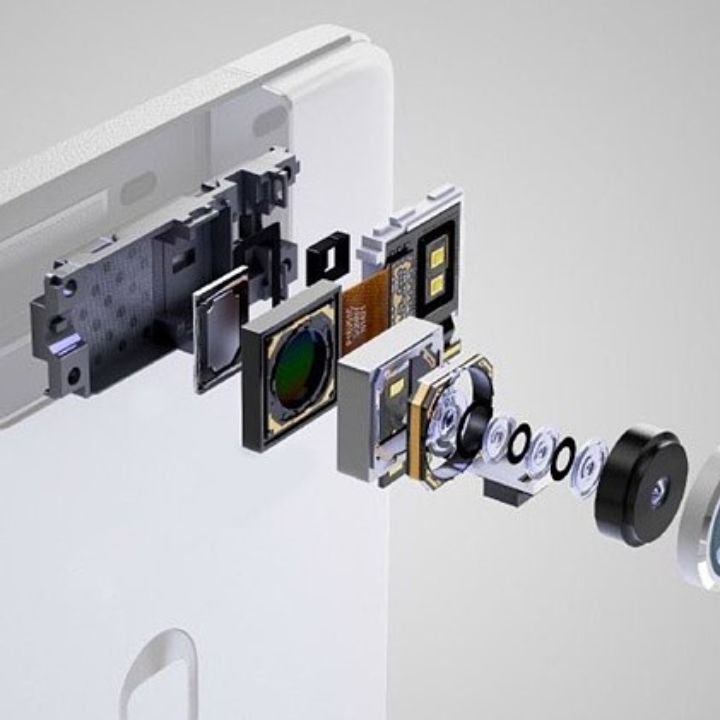In a world where technology is constantly evolving, one of the most remarkable transformations has occurred in the realm of photography. The advent of smartphone cameras has revolutionized the way we capture and share moments. With their convenience, accessibility, and ever-improving quality, these miniature marvels have redefined the art of photography.
1. The Evolution of Smartphone Cameras
Smartphone cameras have come a long way since their humble beginnings. From the pixelated and grainy images of the early models to the crystal-clear, high-resolution photographs of today, the evolution has been astounding. Manufacturers invest heavily in research and development to enhance camera capabilities, resulting in a significant shift in how we perceive photography.
1.1 Megapixels: More Than Just a Number
Megapixels used to be the sole determinant of image quality. However, the modern smartphone camera focuses on more than just megapixels. It integrates advanced image processing algorithms, improved sensor technology, and better optics to produce stunning images that go beyond mere numbers.
1.2 The Rise of Multiple Lenses
One lens is no longer enough. Smartphone cameras now feature multiple lenses, each optimized for different scenarios. Wide-angle lenses capture breathtaking landscapes, while telephoto lenses bring distant subjects closer. The versatility offered by these lenses caters to a wide range of photographic preferences.
2. Accessibility Breeds Creativity
Gone are the days when photography was confined to professionals with bulky equipment. The accessibility of smartphone cameras has democratized photography, allowing anyone and everyone to become a visual storyteller.
2.1 Spontaneity Unleashed
Smartphone cameras encourage capturing moments on the fly. Candid shots, everyday occurrences, and unexpected scenes can be instantly captured and shared. This spontaneity adds authenticity to the art of photography.
2.2 Breaking Barriers
The smartphone camera’s compact size eliminates the intimidation factor often associated with traditional cameras. This has led to more experimentation and innovation, with users fearlessly exploring various angles, compositions, and lighting.
3. Social Sharing and Connectivity
The integration of smartphone cameras with social media platforms has transformed how we share our visual stories. Instant sharing, likes, comments, and engagement have turned photography into a dynamic, communal experience.
3.1 Visual Communication
Images speak louder than words, and social media platforms like Instagram, Snapchat, and TikTok thrive on visual content. Smartphone cameras facilitate concise yet powerful visual communication, enabling users to convey messages effortlessly.
3.2 The Viral Phenomenon
Smartphone-captured images and videos have the potential to go viral within minutes. This level of exposure was once exclusive to professional photographers. Now, anyone can capture a unique moment and watch it spread across the internet like wildfire.
4. Pushing the Boundaries
The relentless innovation in smartphone camera technology continually pushes the boundaries of what is possible.
4.1 Night Mode Magic
Night mode capabilities have revolutionized low-light photography. Smartphones can now capture stunning details in environments with minimal lighting, revealing a whole new world of possibilities.
4.2 Computational Photography
Smartphone cameras employ computational photography techniques to enhance image quality. Through AI-powered algorithms, they can adjust settings, reduce noise, and improve dynamic range, resulting in images that were once only achievable with complex editing.
5. The Future of Photography
As smartphone cameras continue to evolve, the future holds even more exciting prospects.
5.1 Integration of AR and AI
Augmented Reality (AR) and Artificial Intelligence (AI) will likely play a significant role in shaping the future of smartphone photography. Imagine real-time language translation as you frame a shot or AI-powered suggestions for enhancing your composition.
5.2 Redefining Creativity
With advanced features becoming more accessible, creativity will flourish. The line between photography and digital art will blur as users experiment with filters, effects, and editing tools that were once the domain of professional software.
Conclusion
Smartphone cameras have indeed redefined photography. They have empowered individuals to capture moments with unprecedented ease, share stories instantly, and push the boundaries of creativity. As technology continues to advance, we can only imagine the heights to which smartphone cameras will take us.
FAQs
- Are smartphone cameras better than traditional cameras? Smartphone cameras have evolved significantly and offer impressive quality, but they still have limitations compared to dedicated cameras with interchangeable lenses and larger sensors.
- How important is AI in smartphone photography? AI plays a crucial role by enhancing image processing, enabling features like facial recognition, scene optimization, and computational photography.
- Can smartphone photography be a viable career? Yes, many content creators and influencers have built careers around smartphone photography, leveraging social media and online platforms.
- What’s the biggest challenge in smartphone photography? Low-light photography remains a challenge, despite advancements in night mode technology.
- Will traditional cameras become obsolete? Traditional cameras will always have their place, especially among professionals and enthusiasts who require ultimate control and the best image quality.

